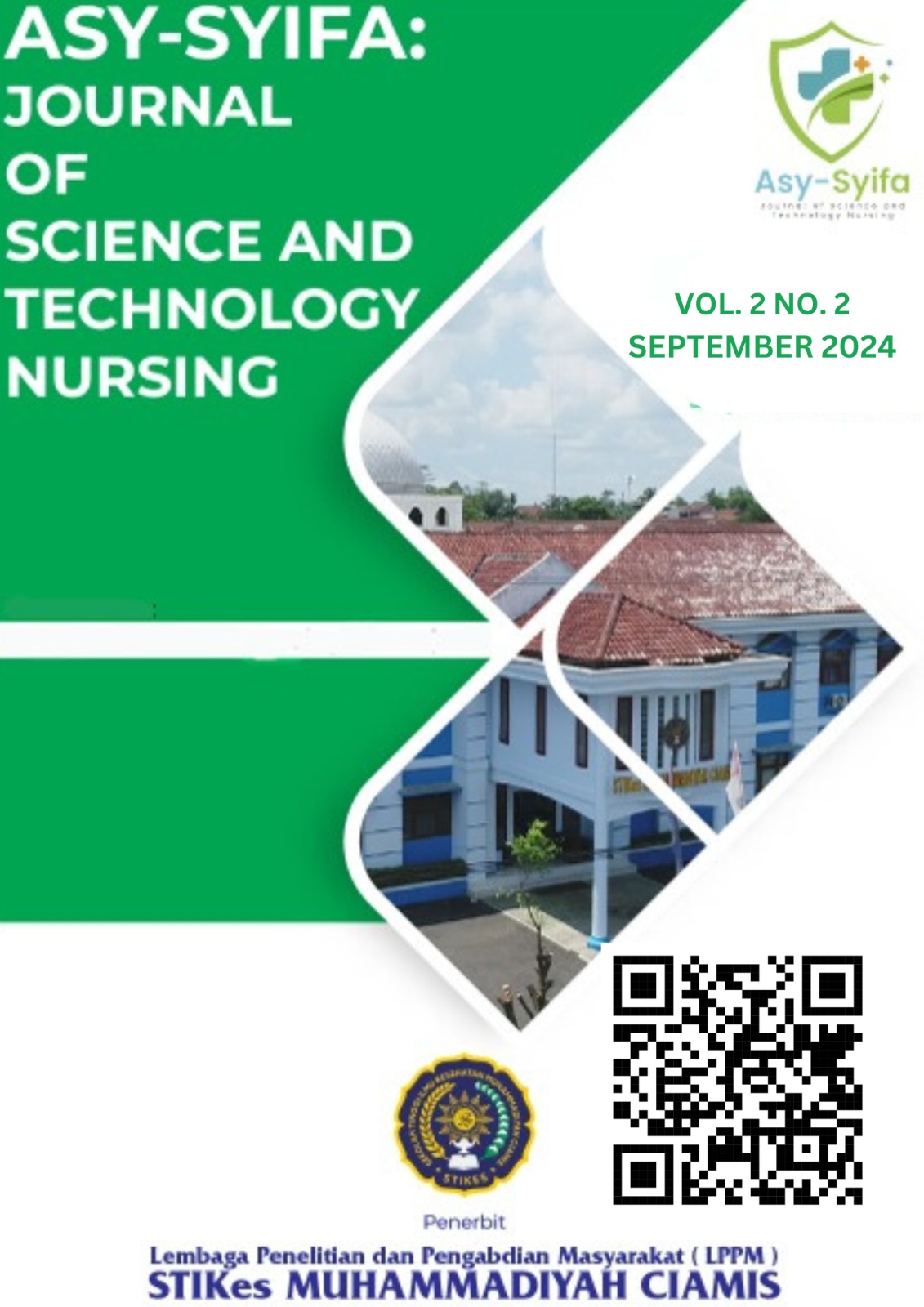Analysis of Sociodemographic Factors on Deprresion Levels in Stroke Patients Using Structural Equating Modelling (SEM)
Main Article Content
Abstract
Purpose: The purpose of this study is to analyze the sociodemographic factors that affect the level of depression in stroke patients. Methods: This research method employs a Prospective Cohort approach conducted over approximately 3 months. The population and sample in this study consist of 40 respondent stroke patients in the Mawar Ward of RSUD Ciamis. Sampling was carried out using the Purposive Sampling technique. Data collection was conducted using a questionnaire assessing the level of depression using the HDRS assessment with the Structural Equating Modelling (SEM) method. Results: This research was conducted from March to May 2023. The research results from 40 respondents revealed that 12 individuals experienced depression, with 8 having mild depression, 3 with moderate depression, and 1 with severe depression. The most dominant sociodemographic factors were age and educational level, with education obtaining an R-square value of 0.198 and age 0.032. Conclusions: The conclusion drawn from this research is that sociodemographic factors influencing the level of depression in stroke patients are age and educational level.
Downloads
Article Details

This work is licensed under a Creative Commons Attribution 4.0 International License.
References
Anwairi, U. (2021). Psychosocial Nursing Care Management With Anxiety Problems In Stroke Patients [Preprint]. Open Science Framework. Https://Doi.Org/10.31219/Osf.Io/Eqhvr
Basit, M., & Mahmudah, R. (2019). Analysis Of Factors Of Depression Incidence In Post-Stroke Clients Of Banjar Tribe, Banjarmasin. Health Dynamics Journal Of Midwifery And Nursing, 10(2), 730–744. Https://Doi.Org/10.33859/Dksm.V10i2.508
Campbell, BCV, De Silva, DA, Macleod, MR, Coutts, SB, Schwamm, LH, Davis, SM, & Donnan, GA (2019). Ischemic Stroke. Nature Reviews Disease Primers, 5(1), 70. Https://Doi.Org/10.1038/S41572-019-0118-8
Dewi, Y., Relaksana, R., & Siregar, AYM (2020). Analysis Of Socioeconomic Status (SES) Factors Against. 5.
Dirgayunita, A. (2016). Depression: Characteristics, Causes And Treatment. Journal An-Nafs: Psychology Research Study, 1(1), 1–14. Https://Doi.Org/10.33367/Psi.V1i1.235
Harahap, HS, Indrayana, Y., Putra, HS, & Retnowati, I. (2021). Early Detection And Education On The Importance Of Managing Depression And Its Risk Factors In Ischemic Stroke Patients At The West Nusa Tenggara Provincial Hospital. Indonesian Science Community Service Journal, 3(1), Art. 1. Https://Doi.Org/10.29303/Jpmsi.V3i1.109
Kanggeraldo, J., Sari, RP, & Zul, MI (2018). Expert System For Diagnosing Hemorrhagic And Ischemic Stroke Disease Using The Dempster Shafer Method. RESTI Journal (System Engineering And Information Technology), 2(2), 498–505. Https://Doi.Org/10.29207/Resti.V2i2.268
Nurhikmah. (2021). The Relationship Between Diet And Behavior Patterns And Stroke Incidence At Lanto Daeng Pasewang Regional Hospital, Jeneponto Regency | Al GIZZAI: Public Health Nutrition Journal. Https://Journal3.Uin-Alauddin.Ac.Id/Index.Php/Algizzai/Article/View/22370
Obeid, S., Abi Elias Hallit, C., Haddad, C., Hany, Z., & Hallit, S. (2018). Validation Of The Hamilton Depression Rating Scale (HDRS) And Sociodemographic Factors Associated With Lebanese Depressed Patients. L'Encéphale, 44(5), 397–402. Https://Doi.Org/10.1016/J.Encep.2017.10.010
Pai, H.-C., Li, C.-C., Tsai, S.-M., & Pai, Y.-C. (2019). Association Between Illness Representation And Psychological Distress In Stroke Patients: A Systematic Review And Meta-Analysis. International Journal Of Nursing Studies, 94, 42–50. Https://Doi.Org/10.1016/J.Ijnurstu.2019.01.015

